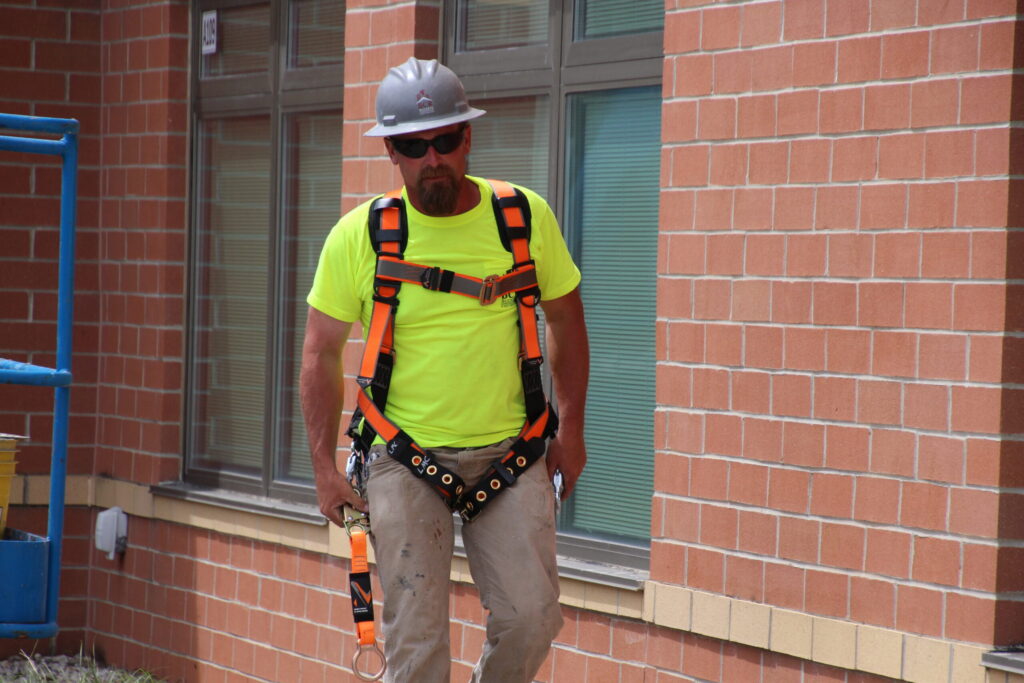Every construction site comes with workplace hazards from working at heights to handling heavy equipment. Without the right safety measures in place, severe injuries can happen fast. That’s why regular safety meetings and toolbox talks aren’t just a formality; they’re critical to keeping everyone safe and your job site running smoothly.
Safety isn’t just about meeting OSHA requirements. It’s about making sure every crew member goes home at the end of the day in one piece. By covering key safety topics, you’re setting your team up for success and preventing the kinds of accidents that can shut a site down. Let’s talk about the must-cover safety topics that should be on your radar.
 Essential Safety Talk Topics
Essential Safety Talk Topics
Holding informal discussions surrounding safety procedures and potential hazards, such as toolbox talks, keeps safety top of mind and helps prevent accidents before they happen. Here are some of the most important safety topics you should be discussing with your crew:
1. Fall Protection and Ladder Safety
Falls are one of the biggest dangers on a construction site, but they don’t have to be. Your crew needs to know how to use fall protection gear the right way whether it’s harnesses, safety nets, or guardrails. Ladders? They seem simple, but a poorly positioned ladder or a careless climb can lead to serious injuries. Make sure your team knows how to inspect, secure, and use ladders correctly every time.
2. Personal Protective Equipment (PPE)
No one likes wearing extra gear, but PPE exists for a reason. Hard hats, safety glasses, gloves, and high-visibility vests protect workers from falling objects, chemical exposure, and other hazards. Your team needs to know what to wear, when to wear it, and why it matters. If a crew member isn’t taking PPE seriously, they’re not just putting themselves at risk, they’re putting everyone around them in danger too.
3. Handling Hazardous Substances
Construction sites are full of hazardous chemicals, from adhesives to solvents. Without the right precautions, they can be a serious hazard. OSHA requires clear labeling, safety data sheets, and training so workers know exactly what they’re handling and how to protect themselves. Make sure your crew understands safe storage, proper handling, and what to do in case of a spill or exposure.
4. Electrical Safety and Lockout / Tagout Procedures
Electricity is a silent but deadly threat on job sites. One wrong move around live wires or improperly grounded electrical equipment can have devastating consequences. Your team should know how to identify electrical hazards, use ground fault circuit interrupters (GFCIs), and follow lockout/tagout procedures to prevent accidental equipment start-ups during maintenance.
5. Heavy Equipment and Proper Lifting Techniques
Cranes, forklifts, and excavators make the job easier, but they also come with serious risks. Operators need the right training when lifting heavy machinery, and everyone on-site should understand proper signaling, load limits, and machine inspections. Even tasks as simple as lifting heavy materials can cause long-term injuries if done incorrectly. Teaching your crew to lift with their legs, keep loads close to their body, and avoid twisting can prevent strains and sprains before they happen.
6. Proper Procedures for Working With Power Tools
Power tools make construction possible, but they can also be dangerous if misused. Whether it’s saws, drills, grinders, or nail guns, workers need to know how to operate them safely, use guards and protective gear, and keep them in good working condition. A quick reminder before a shift can prevent accidents that could send someone to the hospital.
7. First Aid Training and Immediate Response
Accidents can happen, no matter how careful your team is. That’s why it’s essential for your crew to know basic first aid and how to respond immediately to an injury. Having someone on-site trained in CPR and first aid can make a difference between a quick recovery and a life-threatening situation. Make sure your workers know how to respond to common injuries they might face on the job, whether it’s applying pressure to stop bleeding, splinting a broken bone, or safely treating burns. Make sure all employees know the location of the first-aid kit and how to use it. Don’t forget about emergency procedures for more serious injuries. Having clear steps and communication for calling emergency services can save valuable time when every second counts.
forget about emergency procedures for more serious injuries. Having clear steps and communication for calling emergency services can save valuable time when every second counts.
Enforcing Safety Standards and Training Your Crew
Safety Protocols don’t mean much if they’re not enforced. Training isn’t a one-and-done deal, it needs to be ongoing. Regular safety meetings reinforce best practices, keep your team updated on new safety issues, and create a culture where speaking up about potential hazards is the norm, not the exception.
It’s also critical to ensure workers receive proper training before operating heavy equipment or handling hazardous materials. OSHA requires documented training and competency evaluations, so make sure your team is not just going through the motions but actually learning what they need to stay safe.
Strengthening Your Safety Program With the Right Equipment
Safety isn’t just about rules, it’s about having the right tools for the job. High-quality fall protection gear, safety nets, harnesses, and PPE can make all the difference in preventing injuries. Investing in reliable construction safety equipment ensures compliance with OSHA standards and, more importantly, keeps your crew protected.
At Malta Dynamics, we know what it takes to keep job sites safe. Our fall protection systems, PPE, and safety solutions are designed to help your team meet compliance standards and avoid unnecessary risks. If you’re looking for the right gear to protect your crew, we’ve got you covered. Because at the end of the day, workplace safety isn’t just a requirement, it’s the foundation of every successful job site.
